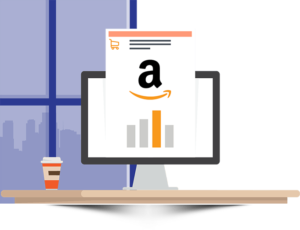
Unlocking Amazon Success: Mastering Total ACOS Optimization
Introduction: In the dynamic realm of Amazon advertising, success hinges on mastering key metrics, and
Relying simply on SEO isn’t a winning strategy to reach your target market. Here are some reasons for this — and what you can do about it.
Consumer’s professional and personal lives have constantly changed over the previous two years.
Consumer behaviours evolved, search engine algorithms continued to develop, and the techniques surrounding and supporting SEO had to evolve.
While SEO is important, relying just on the search to reach your target market is not a winning strategy.
Instead, the value of linked and dynamic digital-first tactics — as adaptive as the people they seek to engage — is already apparent.
Recognize that the customer journey is no longer a straight path.
Marketers must take a step back and rethink strategies to effectively engage with customers. Including dynamism into the cornerstone of their client experience strategy.
While SEO alone isn’t enough, the sector’s issues are numerous and varied.
But, in a nutshell, SEO is complicated and ever-changing. SEO insights provide a real-time picture of the evolving consumer voice, which can inform various digital strategies.
Marketers may use these insights to create comprehensive, multifaceted, and complementary funnels that connect with customers across numerous channels and touchpoints.
In this article, we’ll look at why the most successful marketing teams don’t put all their eggs in one basket. They realize that focusing solely on SEO isn’t enough.
Why content marketing?
Visibility is still dependent on high-quality material. It’s an essential part of a modern marketer’s overall strategy.
Excellent material is inherently engaging. Consumers seek it out across various media because it solves top-of-mind questions across the customer life cycle.
Content marketing has progressed from blogging to including anything from ebooks and podcasts to how-to videos and feel-good social postings.
Marketers and communicators collaborating closely with SEO, employing search term insights and putting customers at the heart of their content strategy have the best chance of succeeding.
The chance to design a client experience strategy supported by excellent content that engages with consumers across platforms, channels, and touchpoints is provided by mapping out the consumer journey — and the digital touchpoints throughout each stage.
Content marketing’s reach is boundless, as is its potential to personalize, and this is a winning combination.
The new table stakes are to develop a comprehensive approach that links content marketing with SEO.
Because SEO is continuously evolving and every organization is unique. It can be costly to spend time and effort figuring out what works best for you.
While SEO and PPC are unique channels with distinct characteristics, they both have the same goal: to bring customers to your website.
Taking a comprehensive approach to search, ensuring that SEO and PPC work in tandem, can help you negotiate the ever-changing landscape, pivoting as needed in real-time.
Your team will be able to promote growth while also improving budget efficiency by combining forces and sharing learnings.
Creating integrated dashboards showing organic and paid search results gives a more comprehensive picture of term trends.
This article’s example shows how to use PPC and SEO data to apply a cost-cutting perspective to marketing budget reduction.
Opportunities to increase performance can be recognized visually using charts and graphs by merging organic performance measures such as impressions with PPC conversion statistics.
According to a 2020 study by Google and Ipsos, video advertising based on customer intent has a considerably higher impact than video advertising based on demographics.
Consumer engagement, brand lift, and ultimately sales are boosted when commercials are tailored to their needs and goals rather than their demography.
The figures are precise: social media offers enormous prospects for engaging consumers worldwide, with over 1 billion monthly active users across the top seven social networks.
There’s no denying that social networking sites are authoritative, so creating branded accounts on Facebook, LinkedIn, and Twitter will help you get more search results, which will help you achieve your SEO goals.
Whether your social media goals are to enhance brand awareness, establish engaged communities, or sell products and services, social media platforms are essential for sharing information and promoting your business.
Consider these suggestions for where to spend your effort in 2022 if you’re revising your social strategy.
If you’re starting started, explore techniques that support SEO performance and prepare for integration from the start.
Regular performance tracking is essential for your objectives — social media testing, learning, and pivoting should be ongoing.
Because social media channels offer a wealth of targeting possibilities, both free and paid, and settings can be altered easily — there’s no need to set it and forget it — creating a flexible social strategy is probably much more accessible than planning for dynamism in other marketing and advertising venues.
Take advantage of the flexibility!
Every connection a customer has with your company, whether through marketing, communications, virtual or in-person interactions, affects overall brand perception.
In the digital world, reputation management is critical.
Your SEO efforts will be squandered if you do not control your online reputation. Why? Consumers trust user-generated content, in short.
We are going back to SEO; online reviews aid in developing a positive reputation, which is critical for local results.
Let’s consider the search procedure.
Your website may be one or two of the results presented when a consumer searches for your brand, product, or service.
Other search results could include social media and review sites. It indicate what people say about you, whether good or bad.
You may take control of the story by actively maintaining your online reputation, specifically through review sites and social media channels.
Mistakes happen, and how a company responds to customer criticism has the power to affect how customers see it.
By engaging in discourse, you can refuse any misconceptions and accept responsibility when difficulties have occurred.
You’re just missing an opportunity if you’re not monitoring search results with your brand reputation.
Excellent email marketing allows organizations to contact customers in their own space, on their own time, in a highly controlled environment, developing relationships with potential, current, and former customers.
Interests, demographic detail, and user experience trigger-based segmentation are all possibilities. Only your team’s imagination and the data you’ve gathered limit you.
You can opt to send emails depending on current popular subjects, and it’s simple to keep track of using SEO data like your customer’s voice.
You could also wish to send emails based on the client’s life cycle.
Both choices offer a highly personalized and customizable experience.
Emails can be sent out depending on any interactions with your site (useful “ you left something in your basket” emails come to mind! ), or you can use a time-based plan to send out crucial evergreen material from your site to new subscribers.
Email marketing, regardless of your technique, is a simple and cost-effective way to generate visitors to your website.
Furthermore, like social media platforms, testing and learning allow you to maximize your investment based on proven results.
That’s the type of dynamic strategy we prefer.
Client-centric strategies mean meeting customers on their terms.
Marketers can redefine the possibility by starting with the voice of the customer and exploiting SEO insights in real-time to interact with customers across platforms — digital and otherwise.
An integrated digital marketing strategy can improve brand awareness through a robust digital presence.
Linking content and brand message across channels may improve conversion rates and provide genuine value, resulting in larger and faster returns on investment.
Visit our services page or contact us to get any service. You can find more information like this here.

Introduction: In the dynamic realm of Amazon advertising, success hinges on mastering key metrics, and

Building and managing a unique brand management can be tricky. Amazon Brand Registry is here

Introduction: Welcome to the dynamic world of e-commerce! If you’ve set up your Amazon store

Learn about crafting high-performance product listings in the Amazon store with this guide. What can